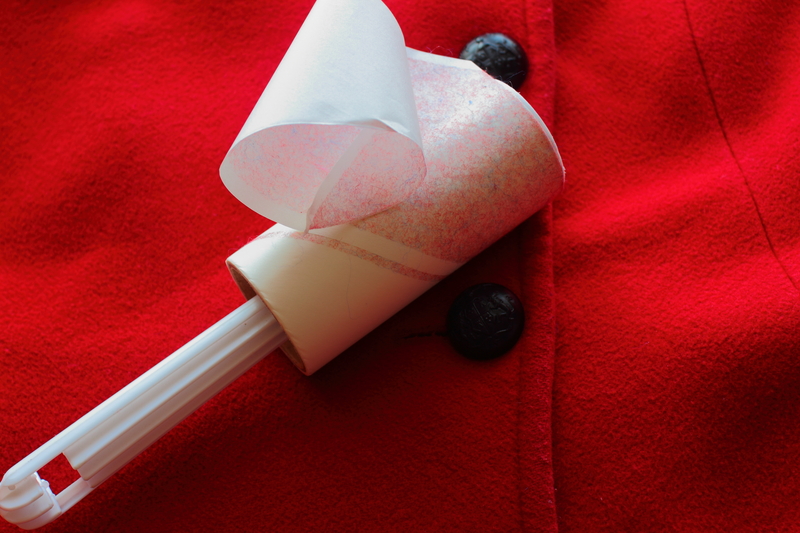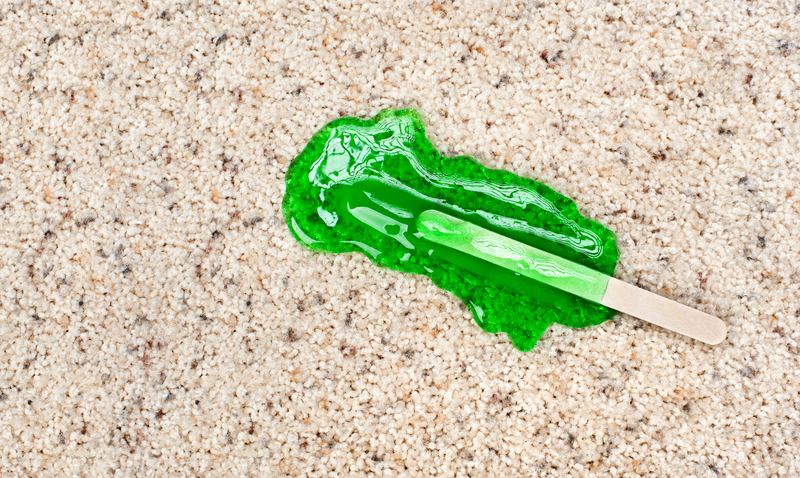Achieve Spotless Window Sills by Eliminating Mould
Posted on 03/06/2025
Achieve Spotless Window Sills by Eliminating Mould: A Comprehensive Guide
Are your window sills plagued by unsightly dark spots and unpleasant odours? Mould growth on window sills is a common problem in many homes, especially in areas with high moisture levels. Not only does mould make your house look unclean, but it can also affect your health and damage your property. This article is your ultimate guide to achieving spotless window sills by completely eliminating mould. Learn how to identify, remove, and prevent window sill mould with actionable steps and expert advice.

Why Does Mould Develop on Window Sills?
Before learning how to remove mould from window sills, it's important to understand what causes it in the first place. Typically, mould is a result of excess moisture, poor ventilation, and organic debris.
- Condensation: Cold glass surfaces can attract condensation, creating a damp environment for mould growth.
- Poor Ventilation: Inadequate airflow prevents moisture from evaporating, fostering mould formation.
- Organic Debris: Dust, dirt, and dead insects provide mould spores with nutrients, helping them to thrive on your window sills.
Types of Mould Found on Window Sills
Spotting the types of mould helps with safe removal. The most common kinds include:
- Black Mould (Stachybotrys chartarum): Known for its stubborn, slimy appearance and potential health risks.
- Green Mould (Cladosporium, Aspergillus): Usually powdery or furry, common in damp corners.
- White Mould: Sometimes fuzzy, often appears alongside condensation.
Health Hazards Associated with Mouldy Window Sills
Ignoring mould on window sills not only mars the appearance of your home but also puts your family's health at risk. Mould spores release into the air, triggering allergies and respiratory problems.
- Allergic reactions: Sneezing, red eyes, skin rash, and asthma attacks are commonplace.
- Respiratory issues: Mould exposure can aggravate breathing difficulties, especially in children and the elderly.
- Chronic fatigue and headaches: Persistent mould can lead to ongoing discomfort and tiredness.
Don't underestimate the impact of indoor mould: taking action to achieve spotless, mould-free window sills is important for both aesthetics and health.
How to Get Rid of Mould on Window Sills: Step-by-Step Process
Ready to eliminate mould from your window sills? Here's the most effective method to clean up the problem and keep your home fresh and safe.
Step 1: Gather Your Supplies
- Protective gloves and face mask
- Old clothes or coveralls
- White vinegar or baking soda solution
- Spray bottle
- Soft brush or sponge
- Microfiber cloths
- Disposable bag for waste
- Optional: Commercial anti-mould cleaner
Step 2: Ensure Ventilation & Protect Surroundings
Open windows and doors to enhance air circulation before you start. Lay down old towels or plastic sheets to catch debris and protect sill surrounds.
Step 3: Remove Surface Debris
Dust and loose dirt with a soft cloth or vacuum nozzle. This prevents additional mess while deep-cleaning the mould.
Step 4: Apply Mould Removal Solution
Fill a spray bottle with a 50/50 mix of white vinegar and water (or use a commercial mould remover if needed). Spray generously onto the affected areas.
- Let the solution soak into the mould stains for at least 15-20 minutes.
- For heavy mould build-up, sprinkle baking soda before spraying.
Step 5: Scrub the Window Sill Effectively
Use your soft brush or sponge to gently but firmly scrub away the loosened mould. Always wipe away from the window and towards your collection towel or sheet.
Step 6: Rinse and Wipe Dry
Rinse the sill with a damp microfiber cloth to pick up any leftover residues. Use a separate dry cloth to remove all moisture, as dry conditions discourage new mould growth.
Step 7: Dispose Waste Properly
Dispose of all contaminated clothes, cloths, and waste in a sealed bag. Wash your hands and cleaning gear thoroughly.
Natural and Chemical Solutions for Mould Removal
When aiming to achieve spotless window sills, the right cleaning solution makes a noticeable difference. Here are the most effective options for both natural and commercial mould removal:
Natural Solutions
- White Vinegar: Acidic and kills up to 82% of mould species. Spray undiluted for stubborn stains.
- Baking Soda: Excellent for scrubbing and neutralising odours. Mix one teaspoon with water to form a paste.
- Hydrogen Peroxide: Kills bacteria and fungi on contact. Use a 3% solution, spray, let sit, then wipe clean.
- Lemon Juice: Natural acid that brightens surfaces as it cleans.
Chemical Solutions
- Commercial anti-mould sprays: Specially formulated for mould removal on window sills, these products often include fungicides for lasting protection.
- Bleach (with caution): Effective against surface mould, but potentially damaging to paint, caulking, or natural wood.
Always spot test a small, inconspicuous area before using any chemical solution, especially on painted or varnished surfaces.
Preventing Mould from Returning: Long-Term Strategies
After you remove mould from your window sills, implementing preventative measures is essential for maintaining their spotless appearance. Here are expert-backed strategies:
1. Enhance Ventilation and Airflow
- Open windows regularly or install trickle vents to promote air exchange.
- Use exhaust fans in kitchens and bathrooms to remove moist air.
- Strategically place fans to avoid stagnant pockets of dampness.
2. Control Humidity
- Keep indoor humidity below 60%, ideally between 30-50%.
- Use a dehumidifier in rooms prone to condensation and mould on window ledges.
- Monitor with a hygrometer for accurate readings.
3. Regular Cleaning and Maintenance
- Wipe window sills dry during cold or rainy weather to stop mould before it starts.
- Vacuum and dust sills weekly to eliminate organic matter mould can feed on.
- Check for leaks and repair damaged window seals promptly.
4. Improve Insulation & Glazing
- Double or triple glazing reduces condensation build-up.
- Add insulating tape or weather strips to prevent cold-bridge effects.
5. Use Anti-Mould Paint or Coating
- Special paints prevent spores from taking root, keeping sills mould-free for longer.
6. Avoid Drying Laundry Indoors
- Moisture from clothes increases humidity and promotes mould near windows. Use outdoor lines or vented dryers wherever possible.
7. Regular Inspection
- Check all window frames, ledges, and sills for early signs of mould growth.
- Address musty smells or black spots immediately.
Special Tips for Different Window Sill Materials
Different types of window sills may require tailored care when it comes to achieving a spotless, mould-free finish.
Wooden Window Sills
- Be gentle - avoid harsh chemicals that strip finish or warp the wood.
- Use vinegar or mild soap, applied sparingly.
- Seal wood after cleaning with appropriate varnish or paint.
uPVC Window Sills
- Non-porous - safe to treat with vinegar, baking soda, or commercial spray.
- Rinse thoroughly after cleaning to avoid residue.
Stone or Tile Window Sills
- Avoid bleach, which can etch stone or grout.
- Stick with pH-neutral cleaners and wipe dry promptly.
When Should You Seek Professional Help?
Some mould problems on window sills may indicate deeper water damage or hidden infestations inside walls. Get professional assessment and remediation if:
- Mould recurs despite your cleaning efforts.
- You notice musty odours from inside window frames or walls.
- The affected area is more than one square metre.
- Family members experience ongoing respiratory issues.
A skilled mould specialist can check for leaks, provide thorough removal, and suggest permanent solutions, ensuring the safety and value of your home.

Frequently Asked Questions About Window Sill Mould
How often should I clean my window sills?
For spotless, mould-free window sills, dust and wipe them weekly, and carry out deep cleaning every 3-6 months, or more frequently in damp seasons.
Can I use bleach on all window sill types?
Bleach is effective for killing surface mould but can damage natural stone or wood. Always check the manufacturer's cleaning guidelines for your materials.
Is mould on window sills dangerous?
Yes, persistent mould can worsen allergies, asthma, and other health problems, while also causing gradual damage to the window structure.
How do I stop condensation on my windows?
Increase ventilation, use a dehumidifier, and improve insulation to reduce condensation and prevent future mould growth.
Are there eco-friendly ways to keep window sills mould-free?
Yes! Vinegar, baking soda, and lemon juice are effective natural mould removers, and regular airing out is both simple and energy-efficient.
Conclusion: Enjoy Spotless, Mould-Free Window Sills All Year Round
Eliminating mould from your window sills is achievable with the right cleaning methods, ongoing maintenance, and preventative strategies. By addressing moisture, improving air flow, and performing regular checks, you can maintain pristine, mould-free window sills that enhance both your home's appearance and your family's well-being.
- Act fast at the first sign of black, green, or white mould.
- Use the best cleaning solutions and tailor your methods to your window sill material.
- Keep moisture under control to prevent future issues.
For the healthiest and most inviting home environment, make mould prevention a regular part of your cleaning routine. Achieve spotless window sills by eliminating mould--and enjoy a fresher, safer living space all year round!



